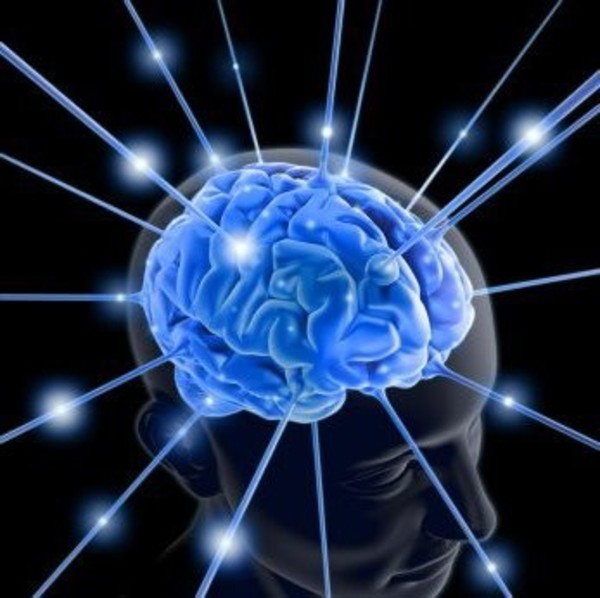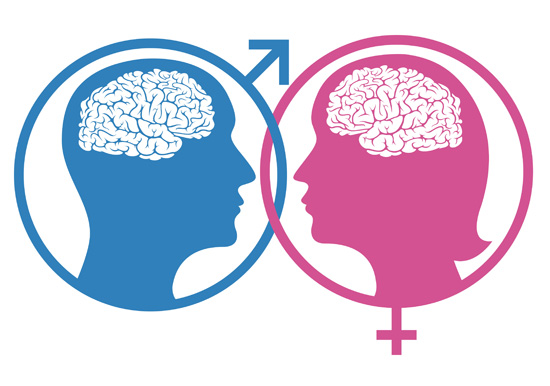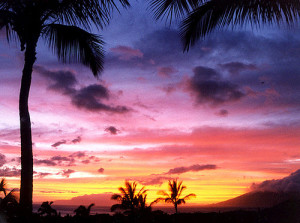The longest Maui sunset – atmosphere science and circadian rhythms
At the end of last month, my husband and I left Vancouver for our 9 day trip to Maui. It’s the honeymoon we never had. After a short stop in LA, We flew west into the perpetual sunset. For six hours, the night sky crept up from behind, but we kept just out of reach. The sky ahead was bright with orange and rainbow clouds, then as time went on, I began to see the atmosphere curving the light into its separate wavelengths. The spectrum of lights shifted towards the longer wavelengths becoming the deep red of burning embers.
On the last day of our trip, we made sure to watch the Maui sunset on the beach against the back drop of waves and palm trees. Just like in the movies, the atmosphere shimmered in the distance, then at the last moment, the sun appeared to jump up right before it sunk out of view. And yes the green flash right before the end was something to watch for. The separation of wavelengths and other phenomenons of sunset are thanks to atmospheric refraction.
Back then on the plane, because we were chasing sunset so high up in the sky on our plane, I had the privilege of seeing the atmospheric refraction both in slow motion and from an angle that really made the bending of the wavelengths very apparent.
As a circadian biologist, I think of sunlight as the greatest zeitgeber – or time giver. Each day, it’s as if the internal clock inside all of us are rewound by the light so that our body can constantly adjust the clock inside to match the time of the environment. (That’s why for you people suffering from jet lag out there, the best thing to do is get plenty of sunlight first thing in the morning).
Our circadian system is most sensitive to light in the blue/green wavelength. It was pretty cool to see it actually being separated out in the atmosphere. From the way it works, blue/green light would be the last to appear and the first to go in a day, what with the light bending the way it does during sunrise and sunset. Does this have any bearing on how the circadian system evolved for pretty much every cell in existence on Earth? I think there could have been some small effects. From the first cell that acquired the ability to sense light, and used that information to help it adjust to the changing environment that differs vastly between morning and night, there must have been multiple reasons that pushed circadian sensitivity towards the blue/green spectrum instead of the red which our visual system can pick up.
Would love to hear what other circadian biologists have to say on this.
Related Posts
-
 Move things with your mind using the real telekinesis of science
No Comments | Oct 4, 2013
Move things with your mind using the real telekinesis of science
No Comments | Oct 4, 2013 -
 Applying science research to everyday life: Turning algae into biofuel
No Comments | Dec 15, 2012
Applying science research to everyday life: Turning algae into biofuel
No Comments | Dec 15, 2012 -
 Plants screaming – high pitched tone coming from irises
No Comments | Mar 21, 2017
Plants screaming – high pitched tone coming from irises
No Comments | Mar 21, 2017 -
 What’s the difference between men and women’s brains
No Comments | Dec 7, 2013
What’s the difference between men and women’s brains
No Comments | Dec 7, 2013


I remember an item in Science magazine ~20 years ago about re-setting your circadian rhythm to local time by observing sunset on the day of arrival. I have been doing this since and for LA to East coast trips, it works great.
Thanks for the interesting comment! Sunset, and indeed any sunlight helps us adjust to a new time zone. But sunrise is even better than sunset in fighting jet lag when you are traveling east :).